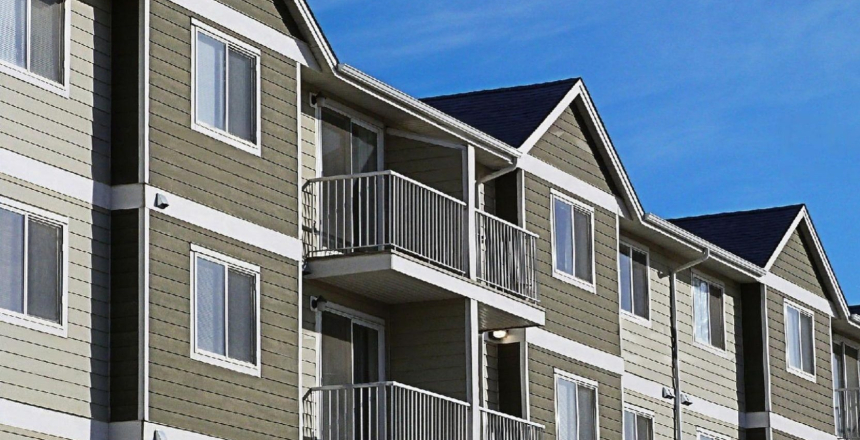While the S&P 500 experienced 22% volatility in 2024, multifamily real estate delivered consistent 8-12% annual returns for passive investors across major metropolitan markets. As career-focused professionals navigate 2025’s complex investment landscape, one asset class continues demonstrating the resilience that institutional investors have relied upon for decades.
The convergence of demographic shifts, supply constraints, and Federal Reserve policy changes has created what many analysts consider the most compelling multifamily investing opportunity in over a decade. For busy professionals earning $100,000+ annually, understanding these market dynamics isn’t just beneficial—it’s essential for building long-term wealth while maintaining focus on demanding careers.
This comprehensive analysis reveals why passive real estate investing through multifamily assets maintains its leadership position among alternative investments, providing actionable insights for professionals evaluating portfolio diversification beyond traditional stock and bond allocations.
THE 2025 MULTIFAMILY ADVANTAGE
The 2025 multifamily trends indicate unprecedented opportunities for strategic investors. Current market fundamentals demonstrate why multifamily investing continues outperforming other real estate sectors and traditional investment vehicles.
Supply and demand imbalances favor multifamily owners across major markets. According to the National Multifamily Housing Council, apartment vacancy rates remain below 5% in 78% of metropolitan areas, while new construction starts declined 28% in late 2024 due to elevated development costs and financing challenges.
Interest rate environments that initially pressured all real estate assets have revealed multifamily’s superior fundamentals. While commercial office properties face 20%+ vacancy rates and retail continues battling e-commerce disruption, multifamily assets demonstrate recession-resistant characteristics through consistent rent collection and housing demand inelasticity.
Market Fundamentals Driving Growth
Key drivers supporting multifamily’s market leadership include:
- Demographic tailwinds: 72 million millennials entering prime homebuying age, with 60% remaining renters due to affordability constraints
- Migration patterns: Sustained population growth in Sun Belt markets driving 4-7% annual rent increases
- Construction barriers: Labor shortages and material costs creating 35-40% development cost premiums for new projects
- Institutional demand: REITs and private equity allocating $180 billion toward multifamily acquisitions in 2024-2025
Interest Rate Impact Analysis
Current Federal Reserve policy creates unique advantages for existing multifamily properties. Interest rates in the 5.25-6.00% range represent normalized lending conditions that favor cash-flowing assets with built-in rent escalation mechanisms.
Properties acquired with fixed-rate financing between 2020-2022 now possess significant competitive advantages over new developments requiring today’s higher-cost debt. This interest rate differential effectively provides existing multifamily investments with protective moats against new supply competition.
WHY PASSIVE MULTIFAMILY INVESTING FITS THE BUSY PROFESSIONAL
Passive real estate investing addresses the primary challenge facing high-achieving professionals: generating substantial returns without sacrificing time or expertise development in unfamiliar sectors.
Career-driven professionals earning substantial incomes often struggle with investment time management. Direct property ownership requires tenant management, maintenance coordination, and market analysis—activities that compete with primary income-generating focus. Multifamily investing through professional syndications eliminates these operational burdens while providing superior diversification benefits.
Professional investment structures offer institutional-quality opportunities typically reserved for large-scale investors. Busy executives can access $20-100 million property portfolios, professional management expertise, and economies of scale impossible to achieve through individual property ownership.
Time Efficiency vs. Active Management
Passive real estate investing provides compelling time arbitrage for professionals valuing both returns and lifestyle preservation:
- Quarterly reporting replaces daily property management responsibilities
- Professional asset management handles tenant relations, maintenance, and capital improvements
- Syndication structures allow portfolio diversification across multiple markets and property types
- Tax benefits include depreciation and cost segregation without direct involvement requirements
Professional Risk Management
Fund structures protect individual investors through professional due diligence, diversified holdings, and experienced management teams. Rather than concentrating risk in single properties, multifamily funds spread investments across multiple assets, reducing individual property performance impact on overall returns.
Sophisticated professionals can evaluate syndication sponsors using similar analytical frameworks applied in their primary careers—examining track records, financial projections, and risk mitigation strategies before capital commitment.
RECESSION-RESISTANT CHARACTERISTICS OF MULTIFAMILY ASSETS
Multifamily investing demonstrates superior defensive characteristics during economic uncertainty compared to other investment classes. Historical analysis reveals multifamily’s resilience stems from housing demand inelasticity and operational flexibility unavailable in commercial real estate sectors.
During the 2008-2009 financial crisis, multifamily properties experienced average value declines of 23% compared to 45% for office properties and 52% for retail assets. Recovery timelines favored multifamily significantly, with most markets returning to pre-recession values within 36 months versus 5-7 years for other commercial sectors.
Rent growth patterns provide natural inflation hedging through annual lease renewals and market-rate adjustments. Unlike fixed commercial leases spanning 5-10 years, multifamily operators can adjust rental rates annually, protecting against inflation erosion and maintaining purchasing power over extended holding periods.
Current economic indicators suggest multifamily’s defensive positioning remains particularly relevant for 2025. Consumer debt levels, housing affordability constraints, and employment uncertainty support sustained rental demand regardless of broader economic conditions.
NAVIGATING 2025: TRENDS SAVVY INVESTORS WATCH
2025 multifamily trends reveal emerging opportunities for strategic investors. Technology adoption accelerates operational efficiency while reducing management costs. PropTech innovations enable remote property monitoring, automated rent collection, and predictive maintenance—improvements that enhance returns without requiring active investor involvement.
Demographic shifts continue favoring rental housing demand. Generation Z enters prime apartment-renting years while baby boomers increasingly downsize from single-family homes to maintenance-free rental communities. These converging trends support sustained occupancy and rent growth across diverse market segments.
Supply constraints appear increasingly permanent rather than cyclical. Construction labor shortages, environmental regulations, and NIMBY opposition to high-density development limit new apartment delivery in high-demand markets. This restricted supply growth supports premium valuations for existing multifamily assets.
Climate considerations increasingly influence investment decisions. Energy-efficient properties command rent premiums while reducing operating costs, creating dual benefits for environmentally conscious investors seeking both returns and impact alignment.
FAQ SECTION: INVESTOR ESSENTIALS
What makes multifamily investing recession-resistant?
Housing remains essential regardless of economic conditions. Multifamily properties provide shelter—a basic need that maintains demand even during economic downturns, unlike discretionary commercial real estate uses.
How much capital is needed for passive multifamily investing?
Most accredited investor syndications require minimum investments between $25,000-$100,000. Some offerings accommodate sophisticated non-accredited investors through compliant structures, expanding access beyond traditional wealth thresholds.
What returns can professionals expect from multifamily funds?
Quality multifamily investing opportunities typically target 15-20% internal rates of return through quarterly cash distributions and appreciation upon sale. Historical performance shows 8-12% annual cash yields plus equity growth.
How does multifamily compare to stock market investing?
Multifamily assets provide tangible asset backing, inflation hedging, and tax advantages unavailable through stock investments. Correlation with equity markets remains low, offering genuine portfolio diversification benefits for risk management.
CONCLUSION
The confluence of demographic trends, supply constraints, and normalized interest rates positions multifamily investing as 2025’s most compelling alternative investment opportunity for career-focused professionals. Unlike volatile stock markets or declining bond yields, multifamily provides predictable cash flow, inflation protection, and appreciation potential through passive investment structures designed for busy executives.
Successful professionals building long-term wealth increasingly recognize that traditional 60/40 stock-bond portfolios require diversification into real assets. Passive real estate investing through professional multifamily syndications offers institutional-quality opportunities without operational requirements that compete with primary career focus.
For qualified investors ready to explore multifamily opportunities, connecting with experienced sponsors who specialize in institutional-grade acquisitions represents the logical next step. Quality operators prioritize investor education, transparent communication, and alignment of interests—essential factors for busy professionals evaluating alternative investment strategies.
Ready to discover how multifamily investing fits your wealth-building strategy? Contact our team to learn about current investment opportunities designed specifically for busy professionals seeking passive income and portfolio diversification.


